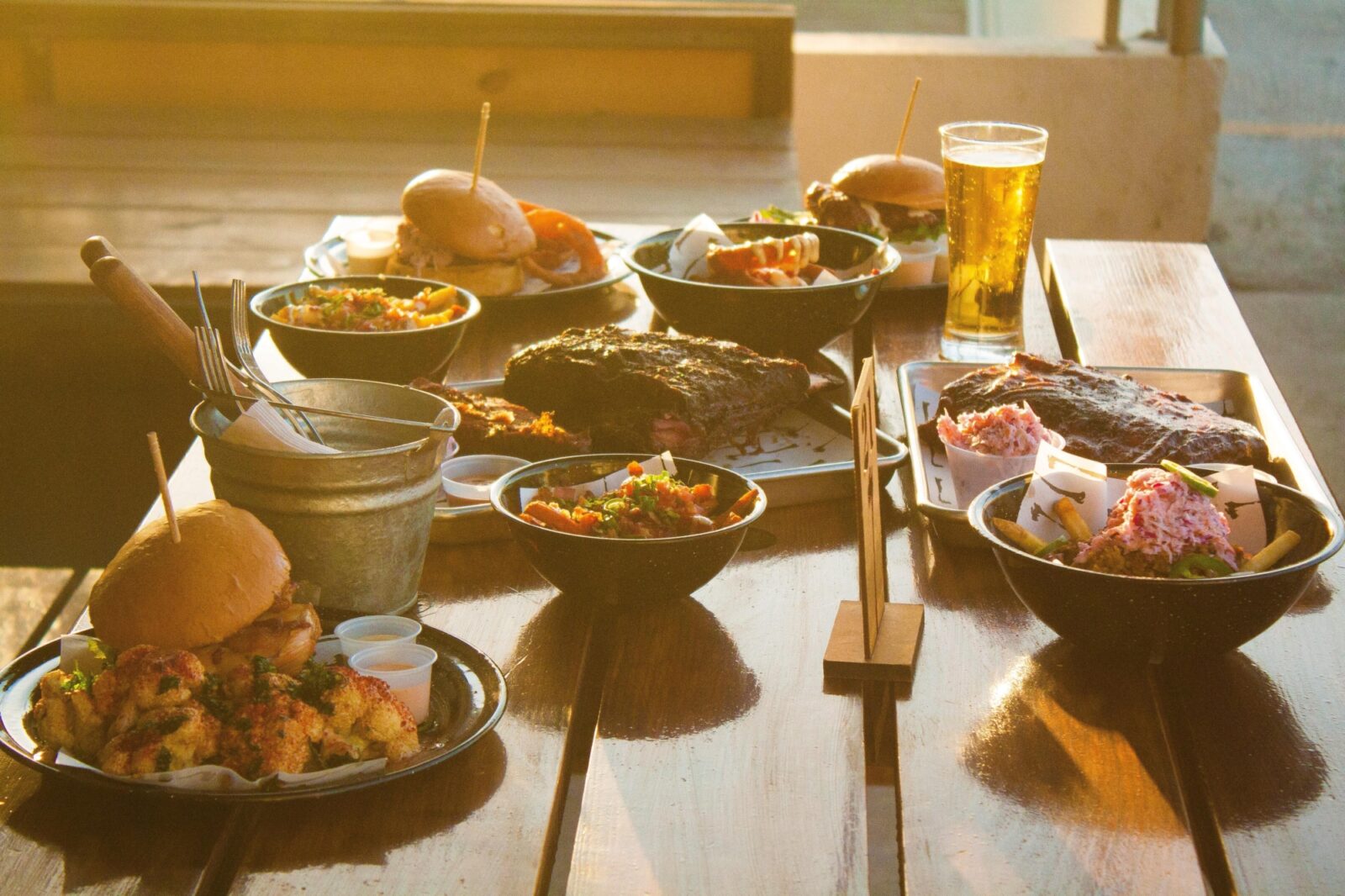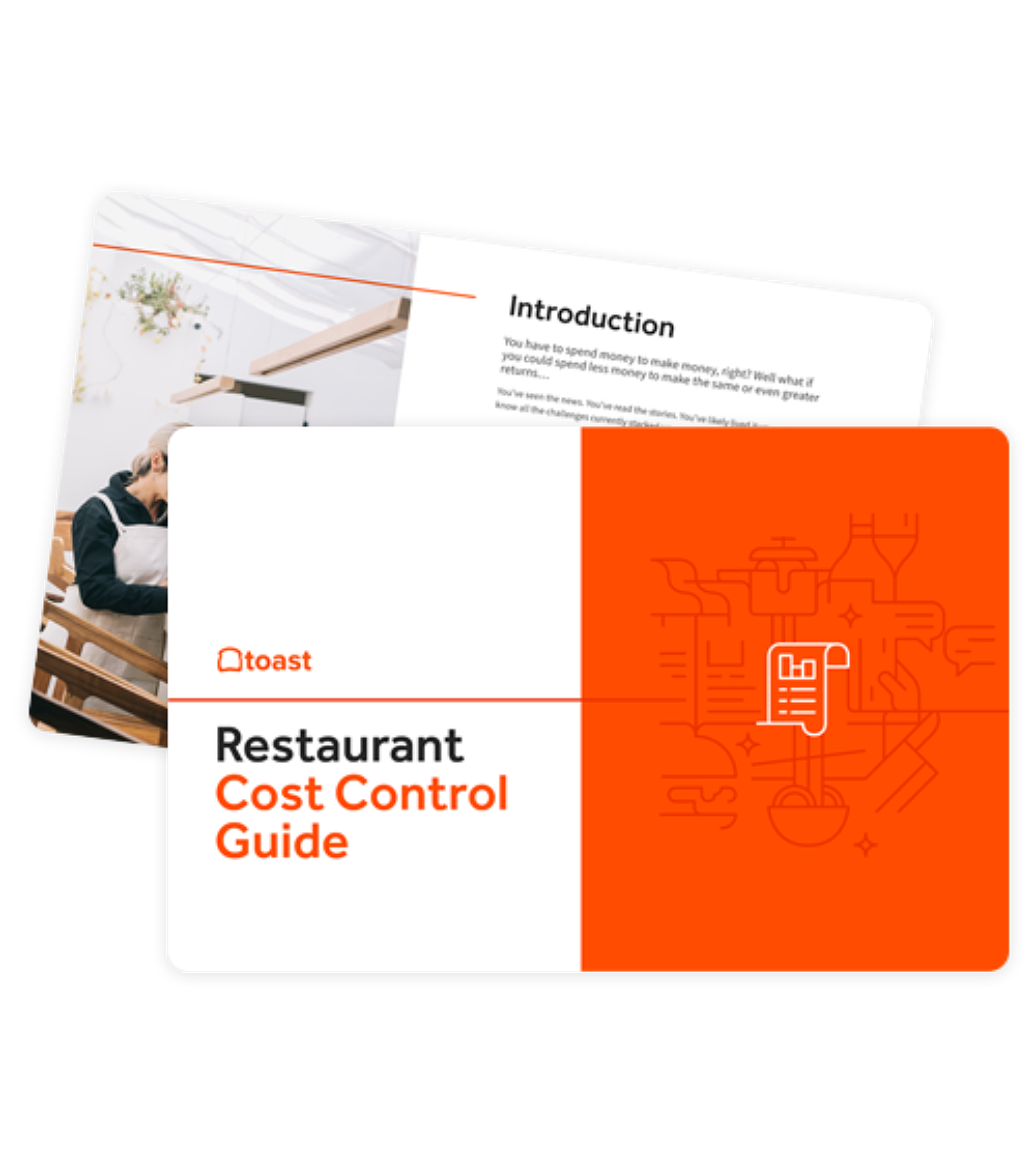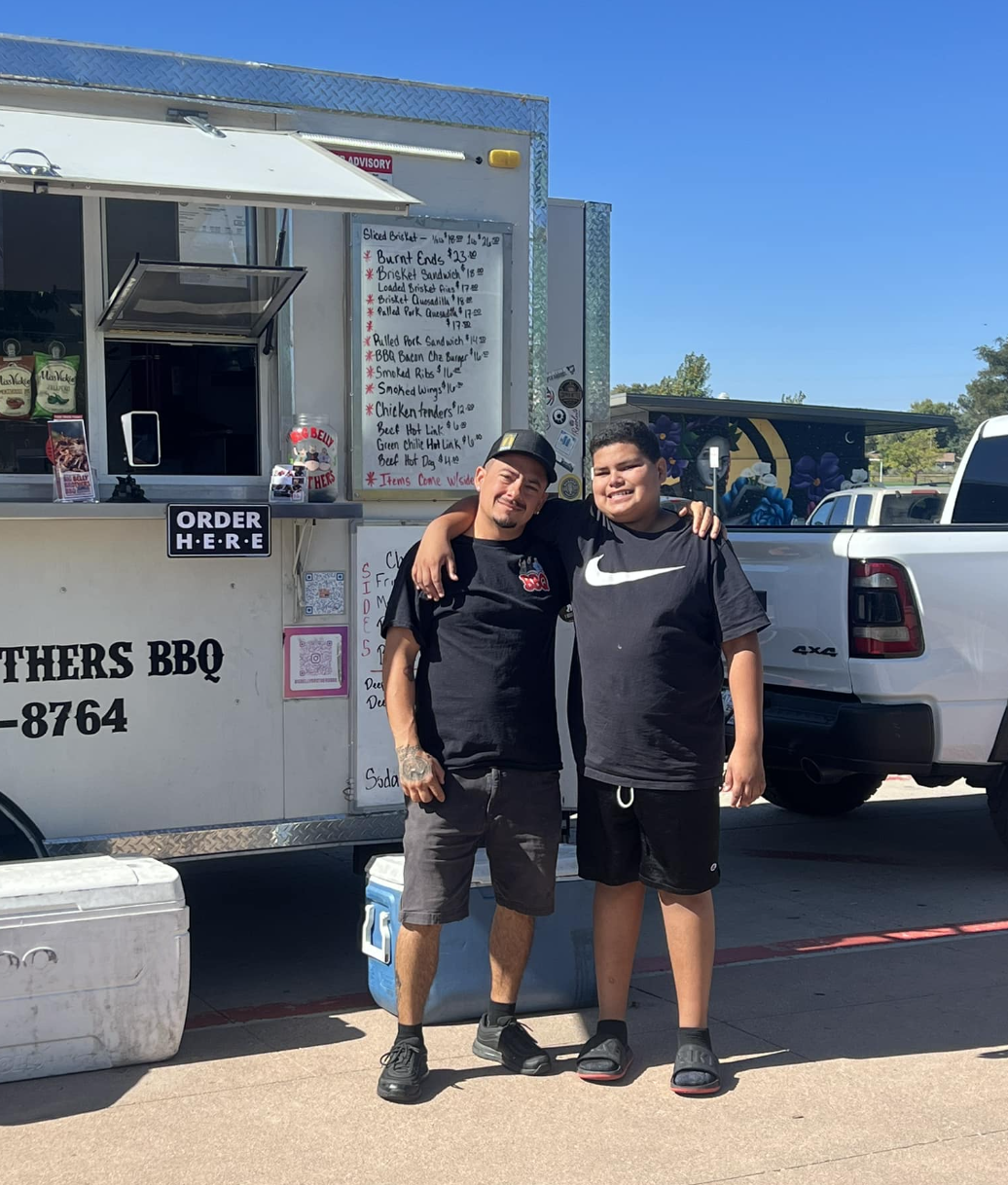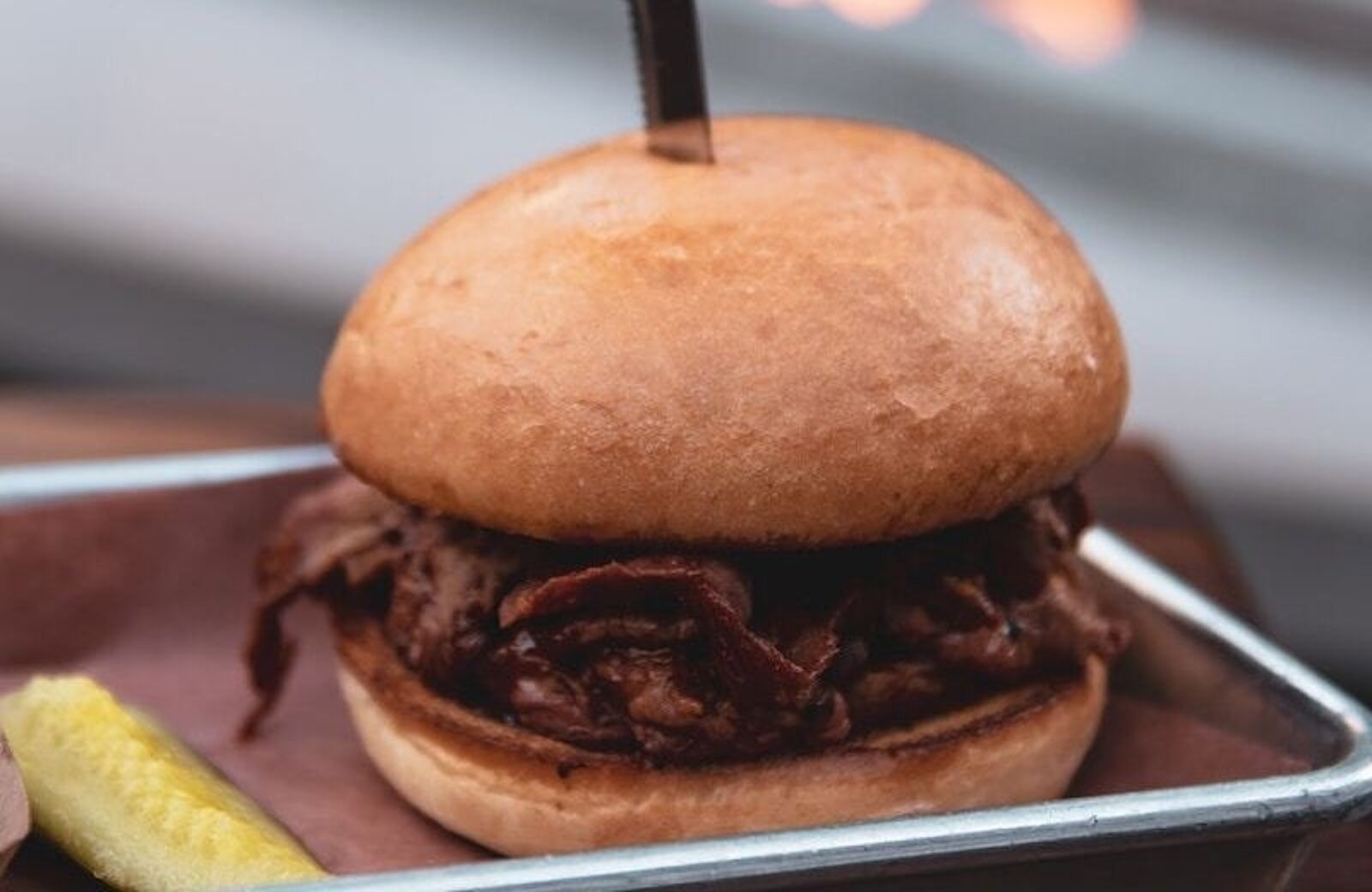
How Much Revenue Does a BBQ Restaurant Make?
Learn how to optimize your BBQ restaurant’s revenue and improve profit margins.
Aidan ToborAuthor


Restaurant Cost Control Guide
Use this guide to learn more about your restaurant costs, how to track them, and steps you can take to help maximize your profitability.
Get free downloadBBQ restaurants, known for their rich flavors and regional variations, can experience a wide range of monthly revenue depending on several factors, including location, menu offerings, and customer base. On average, a BBQ restaurant can generate monthly income between $50,000 and $150,000, with top-performing establishments potentially exceeding these figures. This range is influenced by the restaurant's size, level of service, and the effectiveness of its marketing and customer engagement strategies. According to the Bureau of Labor Statistics, U.S. consumers spend an average of $3,365 per year dining out, or essentially 11.2% of their disposable income, providing BBQ restaurants with an opportunity to capture a significant share of this spending by offering unique dining experiences, premium menu items, and strong community engagement.
Optimizing your BBQ restaurant’s revenue and ensuring long-term growth and viability requires a strategic approach. This includes refining your menu to highlight high-margin items, leveraging technology to streamline operations, and enhancing the customer experience to foster loyalty. Additionally, effective marketing and the ability to adapt to changing consumer preferences play crucial roles in driving consistent revenue and sustaining growth in a competitive market.
Revenue and Profit Margins for Different Types of BBQ Restaurants
Are BBQ Restaurants Profitable?
BBQ restaurants can be profitable, but potential earnings depend on various factors, including location, business model, and operational efficiency. Here's a breakdown of how much different kinds of BBQ restaurants typically make:
Casual BBQ Restaurants
Revenue Range: $50,000 to $125,000 per month
Profit Margin: 10% to 15%
Details: Casual BBQ restaurants, often family-friendly with a focus on dine-in and takeout, generally see moderate to high foot traffic. Their revenue is driven by affordable menu pricing and high customer turnover. Profit margins are typically within the average range for the restaurant industry, benefiting from relatively low food costs for BBQ staples.
Bedlam Bar-B-Q in Oklahoma City, OK creates a fun, casual family-friendly atmosphere. They even host Bingo every Tuesday night.
Fast-Casual BBQ Restaurants
Revenue Range: $40,000 to $100,000 per month
Profit Margin: 8% to 12%
Details: Fast-casual BBQ spots emphasize quick service and takeout, often with a streamlined menu. While these establishments might not reach the higher revenue levels of their full-service counterparts, their operational efficiency helps maintain solid profit margins.
Upscale BBQ Restaurants
Revenue Range: $100,000 to $200,000 per month
Profit Margin: 15% to 20%
Details: Upscale BBQ restaurants, which offer a more refined dining experience, including premium cuts of meat and an elevated ambiance, typically generate higher revenues. These establishments can command higher prices, leading to better profit margins. However, their operational costs, including labor and high-quality ingredients, are also higher.
BBQ Food Trucks
Revenue Range: $10,000 to $50,000 per month
Profit Margin: 20% to 30%
Details: BBQ food trucks, which focus on mobility and catering events, have lower overhead costs than brick-and-mortar restaurants. This increases profit margins, though revenue can fluctuate based on location, seasonality, and event bookings.
Denver, Colorado’s Big Belly Brothers BBQ has a food truck and catering service. They post weekly on Instagram to update their followers on the food truck’s location on any given day.
Food Truck Business Plan Template
Use this free food truck business plan template to easily create a great business plan that organizes your vision and helps you start, grow, or raise funding for your food truck.

Expected Profit Margins
With profit margins typically ranging from 8% to 20%, most BBQ restaurants can achieve a solid return on investment, especially when they effectively manage costs and attract a steady customer base. Upscale BBQ restaurants tend to achieve the highest profit margins due to their ability to charge premium prices, while food trucks benefit from lower overhead costs. Casual and fast-casual BBQ spots usually have profit margins that align with industry averages but can vary based on location, competition, and customer loyalty.
Referring to what a barbecue joint needs to stay successful, Pitmaster Aaron Franklin told Eater Houston,
“... what people want out of a barbecue restaurant is kind of generational. Everybody kind of wants what they grew up eating, or what they’re comfortable with, and some people just don’t care, I guess. But I think there’s always a place for the different styles of the barbecue. There’s always going to be a place for just a straight-up Central Texas barbecue. There’s always going to be a place for the chain barbecue restaurant, a cool creative place for the new-school kind of barbecue. The parameters are pretty wide, but the quality of the food has to be at a certain level ...”
Even if you have a loyal following, understanding the revenue potential and profit margins for your BBQ restaurant type is crucial in setting realistic financial goals and ensuring the long-term viability of your business.
Where to Optimize Costs to Improve Margins
To boost profitability and improve margins, BBQ restaurant owners can focus on the following key areas:
Restaurant Profit and Loss Statement Template
Evaluate your restaurant's financial strengths and weaknesses with the free P&L and income statement template.

1. Food Costs
Optimize menu pricing: Regularly analyze food costs and adjust menu prices to ensure that you're maintaining solid margins. Emphasize high-margin items, like sides and drinks, which often have lower costs than meats.
Portion control: Implement specific portion sizing to reduce waste and ensure consistency across menu items. This can help manage costs while still delivering value to customers.
Supplier negotiations: Build strong relationships with suppliers to negotiate better prices or bulk discounts, particularly for high-volume items like meats and spices.
2. Labor Costs
Efficient staffing: Use data to optimize scheduling and ensure you have the right number of staff during peak and off-peak hours. Avoid overstaffing during slow periods and understaffing during busy times.
Cross-training employees: Train staff to handle multiple roles, which can help reduce labor costs by allowing more flexible staffing arrangements and minimizing the need for additional hires.
Restaurant Labor Cost Calculator
Unlock the power of data-driven labor management with our free Restaurant Labor Cost Calculator. Stop guessing and start optimizing your staffing decisions today.

3. Operational efficiency
Technology implementation: Invest in technology, such as point-of-sale (POS) systems, inventory management software, and kitchen display systems, to streamline operations, reduce errors, and increase efficiency.
Energy management: Reduce utility costs by optimizing energy use in the kitchen by using energy-efficient appliances, maintaining equipment, and monitoring energy consumption.
4. Menu engineering
Simplified menu: Streamline your menu to focus on high-demand, high-margin items. This can reduce waste, streamline kitchen operations, and make it easier to manage inventory.
Seasonal specials: Introduce limited-time offers or seasonal specials that can command higher prices and attract more customers, allowing for temporary boosts in revenue.
Menu Engineering Worksheet
Use this menu engineering worksheet, complete with intricate menu engineering formulas, to determine areas of strength and weakness in your restaurant's menu.

5. Marketing and customer retention
Loyalty programs: Implement loyalty programs to encourage repeat visits and build a steady customer base. Repeat customers are often more profitable than new ones, requiring less marketing spend to retain.
Targeted promotions: Use data-driven marketing to create targeted promotions that attract customers during slow periods or introduce them to high-margin menu items.
By focusing on these areas, BBQ restaurants can improve their profitability, ensuring they remain competitive and financially secure in a challenging industry.
Strategies to Improve Revenue and Growth for a BBQ Restaurant
Enhancing revenue and fostering growth in a BBQ restaurant requires a multifaceted approach that combines strategic marketing, operational efficiency, and customer-centric offerings. Here’s how you can implement these strategies to drive your BBQ restaurant's success:
1. Improve marketing effectiveness
Leverage social media marketing: Utilize platforms like Instagram, Facebook, and TikTok to showcase your BBQ dishes, share customer testimonials, and engage with your audience. Posting regularly, running targeted ads, and encouraging user-generated content can boost visibility and attract new customers.
Adam Perry Lang uses TikTok and Instagram to showcase his business, APL Barbecue. Rather than a brick-and-mortar, he operates a weekend BBQ pop-up at Gin Rummy Bar.
Local partnerships and events: Partner with local businesses, breweries, or event organizers to cross-promote your restaurant. Hosting or participating in local events, BBQ festivals, or catering for community gatherings can help you reach a broader audience and build your brand within the community.
Loyalty programs and customer retention: Develop a loyalty program that rewards repeat customers with discounts, freebies, or exclusive offers. Encouraging customers to join your loyalty program can increase repeat business and boost customer lifetime retention.
2. Enhance productivity and efficiency with technology
Implement a Point of Sale (POS) system: A modern POS system can streamline order processing, track inventory, and provide valuable sales data. This can help you manage your restaurant more efficiently, reduce errors, and make informed decisions about menu items and pricing.
Online ordering and delivery integration: Integrate online ordering and delivery platforms to capture more sales from customers who prefer dining at home. Offering an easy-to-use online ordering system on your website or app can expand your customer base and increase revenue.
Automate inventory management: Use inventory management software to track stock levels in real-time, set reorder alerts, and reduce waste. This ensures that you always have the necessary ingredients without overstocking, which can save on costs and improve cash flow.
3. Increase average order value (AOV)
Upsell and cross-sell: Train staff to suggest add-ons, such as extra sides, appetizers, or beverages, that complement the main BBQ dishes. Highlighting combos or meal deals with multiple items can encourage customers to spend more.
Offer premium products: Introduce premium menu items such as specialty cuts of meat, artisanal sauces, or gourmet sides that command higher prices. These items often have better margins and can appeal to customers looking for a more upscale dining experience.
Limited-time offers and seasonal specials: Create a sense of urgency with limited-time offers or seasonal specials that encourage customers to try new dishes. These can be priced slightly higher due to their exclusivity, boosting your AOV.
For Example, Smoke Queen BBQ’s Chef Winnie Yee-Lakhani collaborated with Le Shrimp Noodle Bar to create a special, limited-time offering that combined her Smoked Pork Belly Char Siu with @leshrimpnoodle’s signature Prawn Noodle Soup. To top it off, a portion of the proceeds was donated to chef Jose Andres’ World Central Kitchen, @wckitchen, which provides food & supplies to disaster and conflict-stricken regions.
4. Increase Customer Purchase Frequency
Email marketing and push notifications: Use email marketing and mobile push notifications to update customers about special deals, new menu items, or events. Regular communication can keep your restaurant top-of-mind and encourage more frequent visits.
Subscription or membership programs: Consider offering a subscription service where customers can pay a monthly fee for regular deliveries of their favorite BBQ items or a membership program that provides exclusive benefits, such as discounts or priority seating.
Host events and themed nights: Hosting themed nights (e.g., BBQ and Blues, Rib Night) or live events can create a unique dining experience that attracts customers to visit more frequently. Events can also serve as a promotional tool, driving interest and increasing foot traffic on slower nights.
By implementing these strategies, your BBQ restaurant can enhance its revenue streams, improve operational efficiency, and build a loyal customer base that supports long-term growth.
Is this article helpful?
DISCLAIMER: This information is provided for general informational purposes only, and publication does not constitute an endorsement. Toast does not warrant the accuracy or completeness of any information, text, graphics, links, or other items contained within this content. Toast does not guarantee you will achieve any specific results if you follow any advice herein. It may be advisable for you to consult with a professional such as a lawyer, accountant, or business advisor for advice specific to your situation.
Read More
Subscribe to On the Line
Sign up to get industry intel, advice, tools, and honest takes from real people tackling their restaurants’ greatest challenges.





